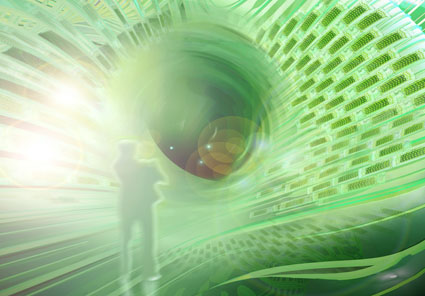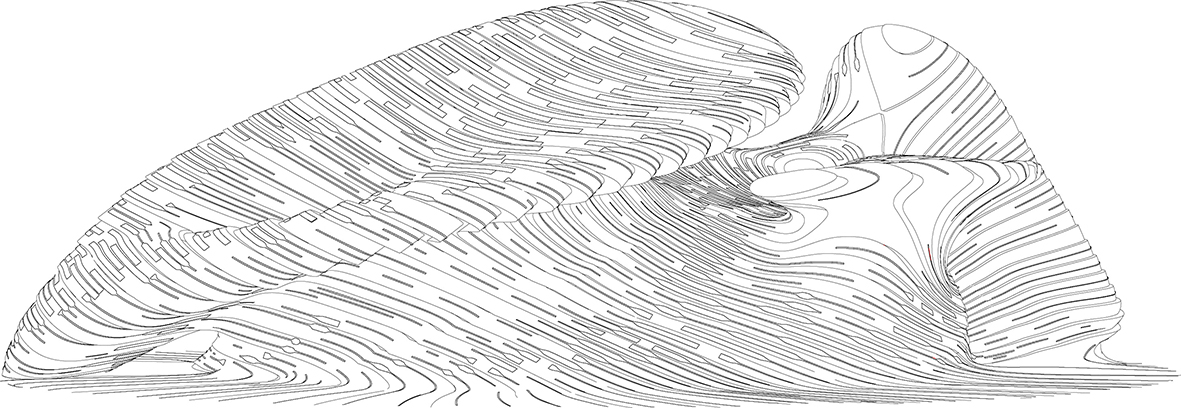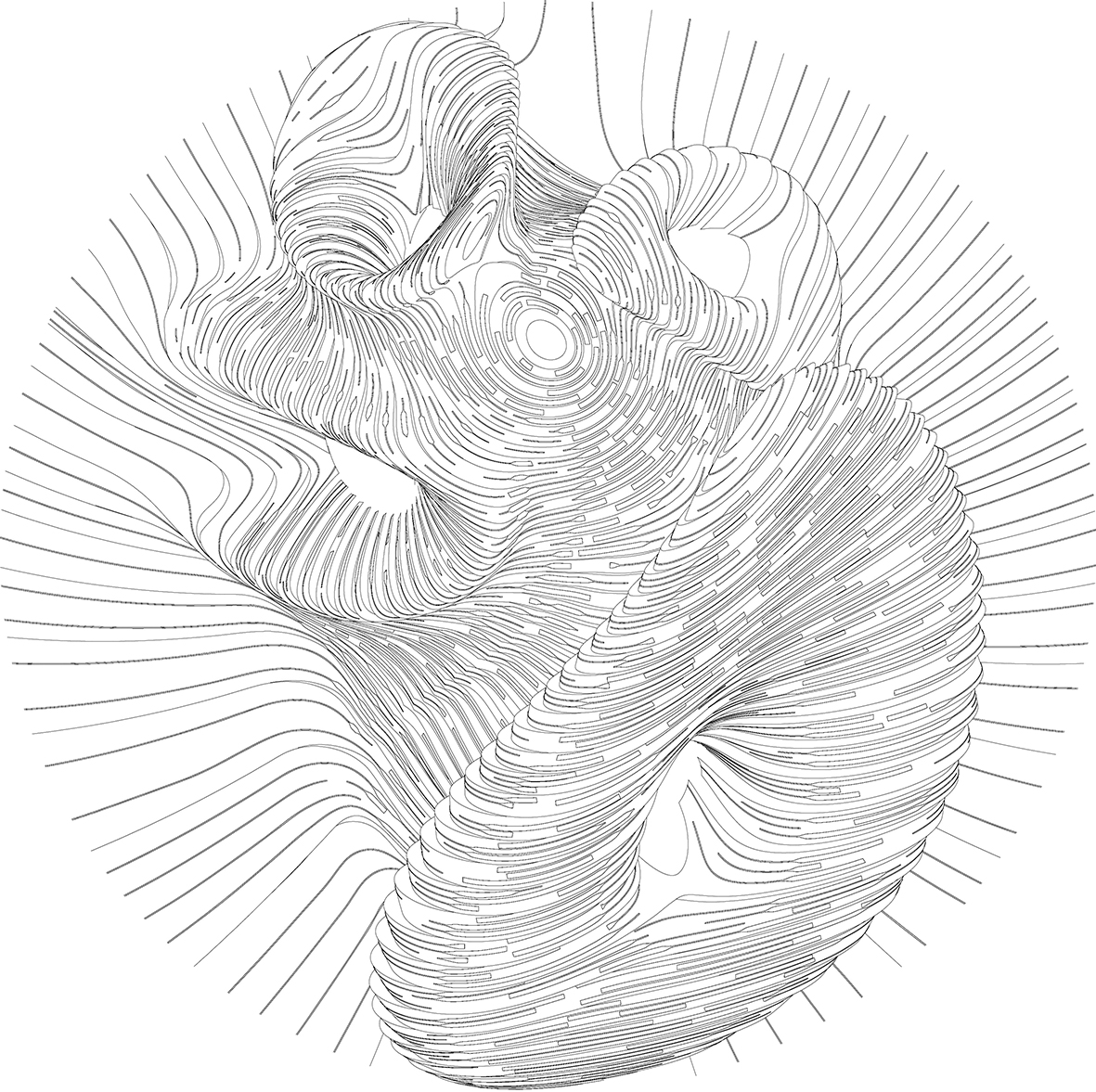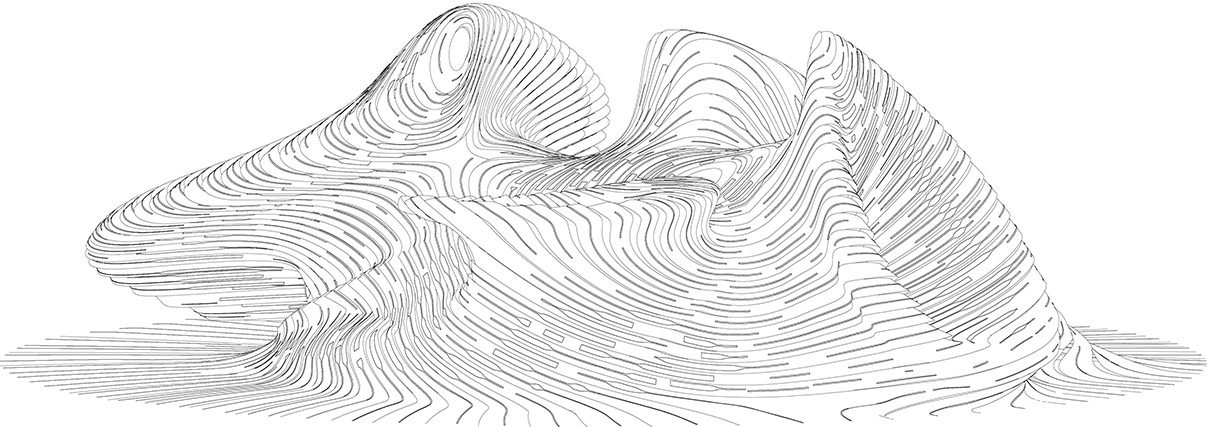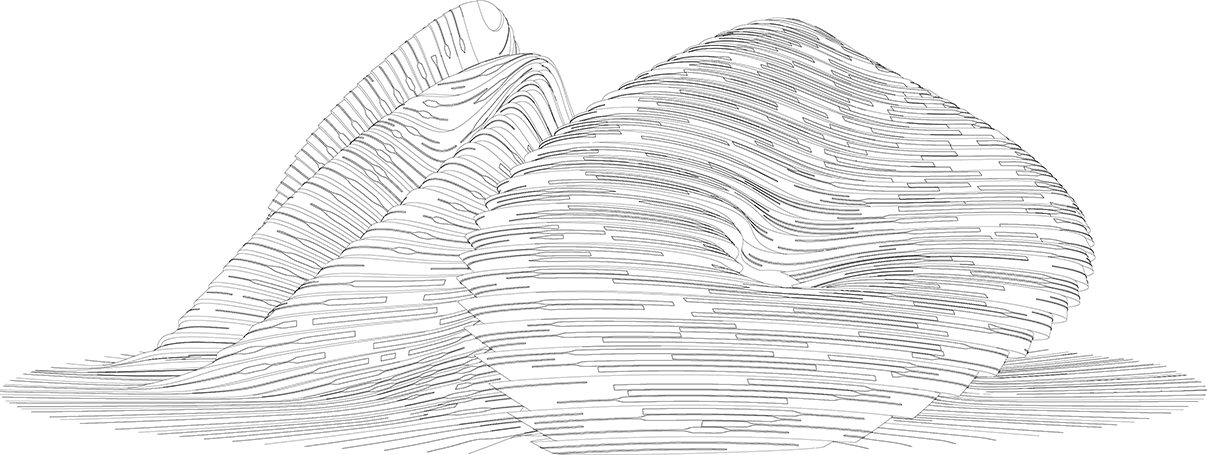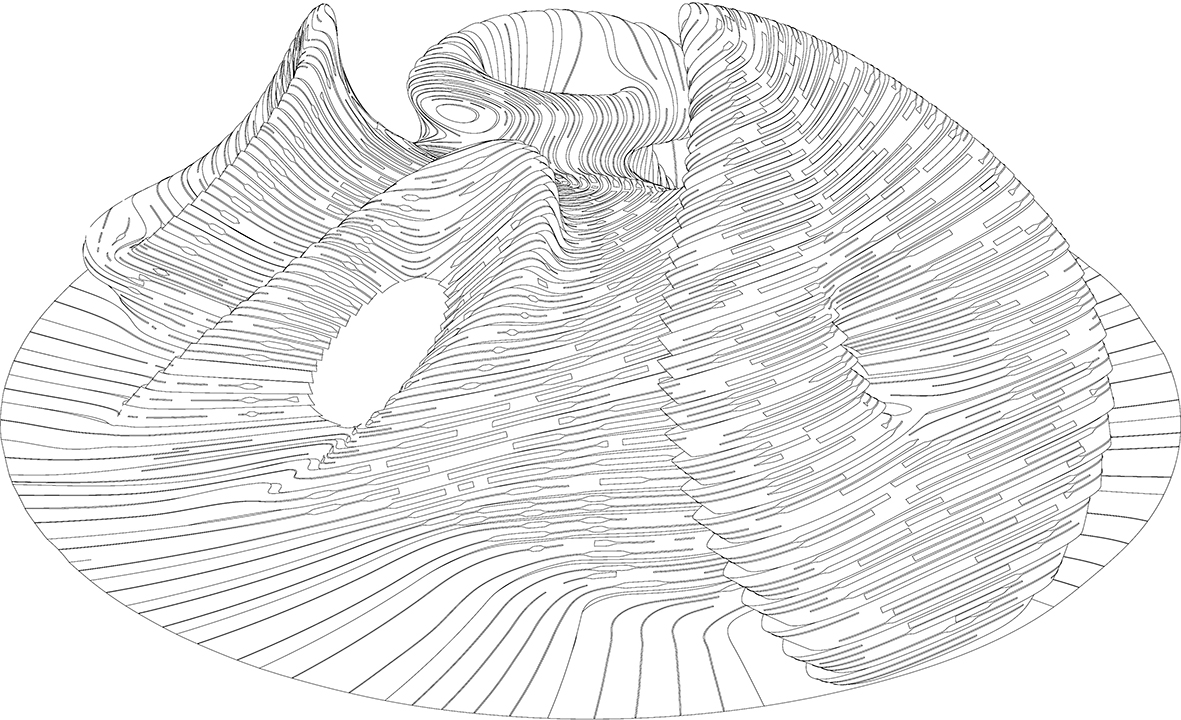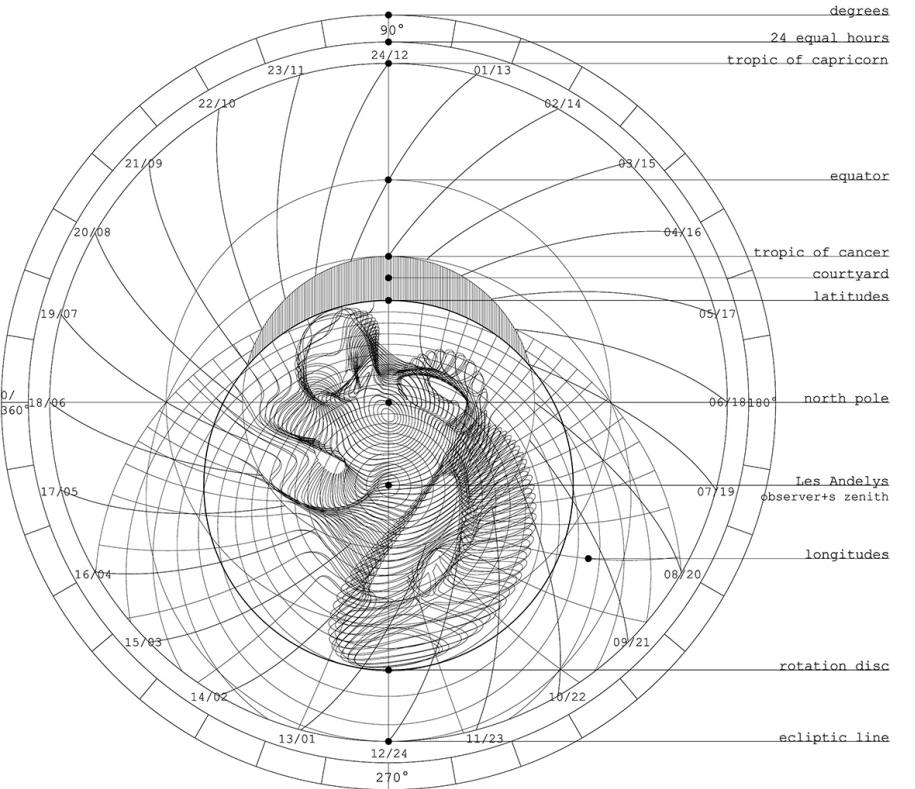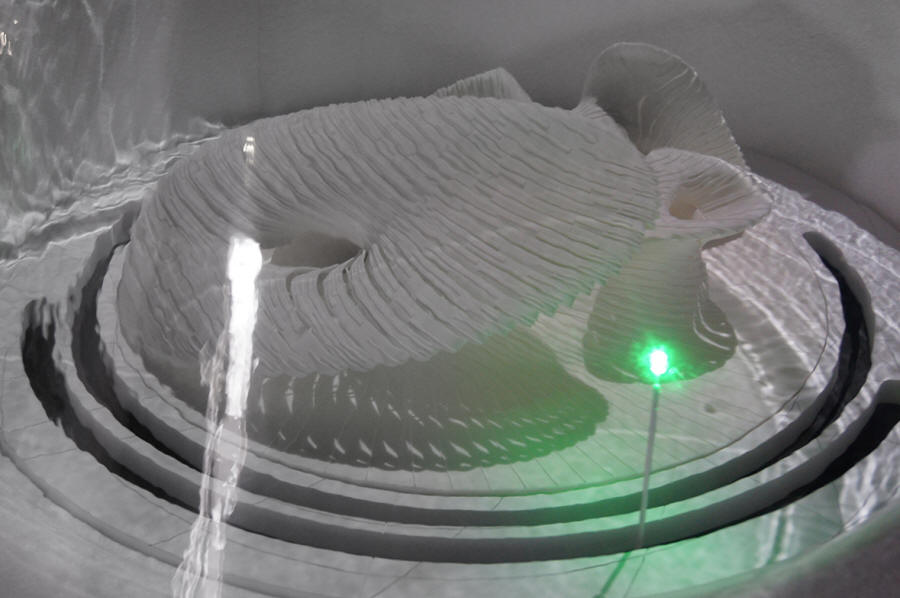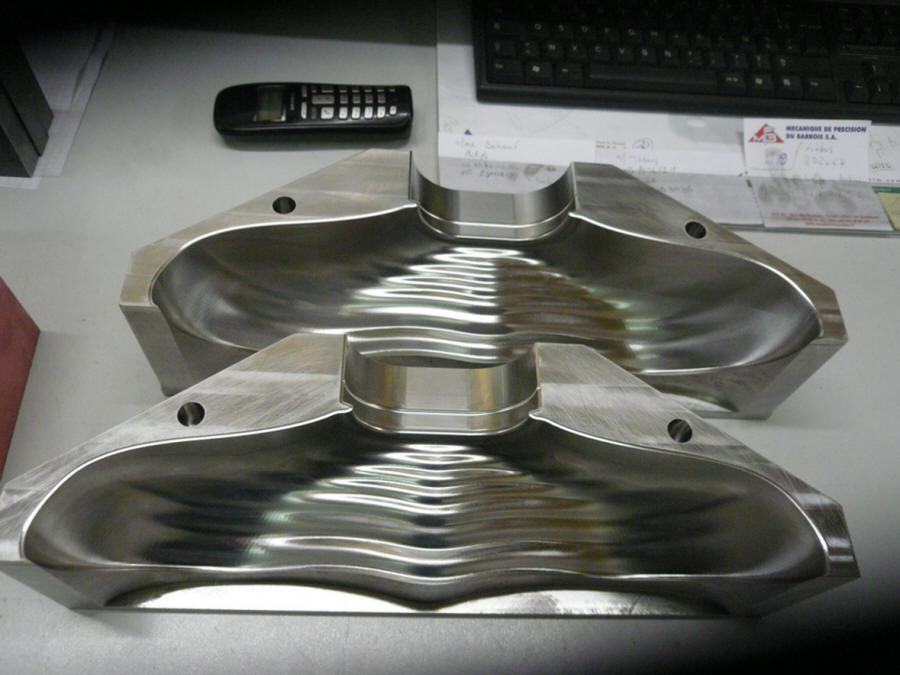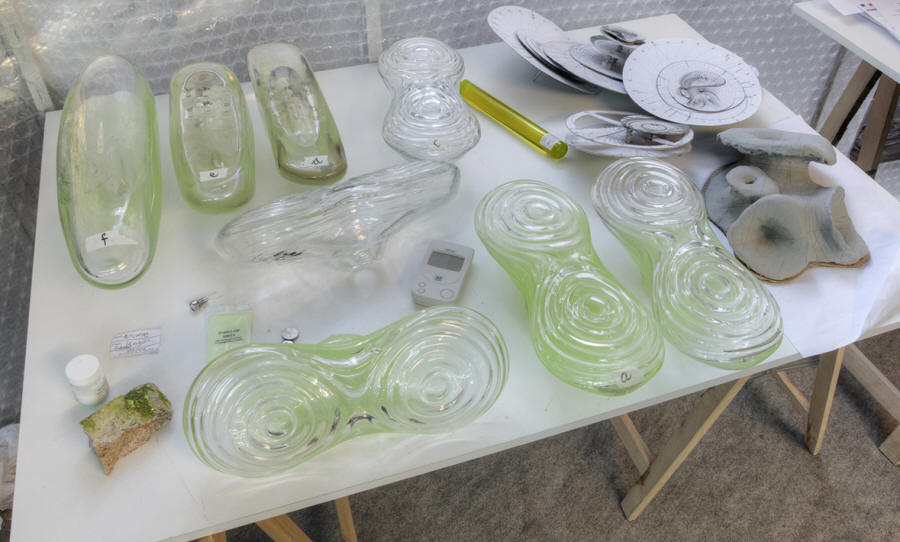DownloadBook / free / by MM-Paris graphicdesigner / https://goo.gl/KZhLiw
![]()
International Pavilion 2010 / Venice Biennale / Arsenal / “People meet in architecture” / Curator K. Sejima /
Isobiot®ope / © R&Sie(n) with Stephan Henrich + Benoit Lalloz / ACT + M/M Paris _ with the participation of Gaetan Robillard, Gorka Arrizabalaga, Sebastien Szczyrk, Jean-Michel Castagné _ and Ulrike Marie Steen, Hamish Rhodes, Gabriel Blue Cira, Sandra Meireis, Alessandra Vassallo, Sina Momtaz, Liza Langard, Melissa Millot
Co-producers / Co-commissioners - Zumtobel Lighting GmbH / Austria / -Thyssen-Bornemisza Art Contemporary / Vienna / Austria /
Sponsors -CULTURESFRANCE / Ministère des Affaires étrangères et européennes / -Materialise / 3D print / Belgium / -Tecmolde / CNC production / Spain
5 mn Speeches / R&Sie(n) / "avatar" / On click
The Isobiot®ope installation unfolds a scenario about a mineral element which is able to indicate the degree of UV crossing the stratosphere through its after glowing appearance (pigment of Isobiotrope exited by the UV ray) and by this way revealing the degree of Ozone degradation at the origin of some human pathologies.
The natural stone is on the middle of the stripe in the installation. It is a radioactive natural element at the level of 0.88 microSievert / hours. Use the Geiger counter to control it. The natural radioactivity of the “citta di Venezia” is 0.16 microSV (in the installation the Alpha rays don’t across more than 15 centimeters and are filtered by human skin barrier).
This installation articulate the dangerousness of the nature, the science coming from the exploration of the nature (from Marie Curie to Little BOY) and in parallel, simultaneously, it is talking of HOW this Isobiot®opic element becomes NOW a marker of the uncertainties of our future, coming from the post-effect of human scientific development (ozone weakness which increases the UV intensity on the earth surface).
It is not a Catastrophic report, or a “green washing” report, but more a recognition of a transition, a translation between past and future, between psychology and physiology, where the natures & sciences has to be reconsidered, renegotiated through Safe and Unsafe aspect.
The 50 prototyping green components are done with 10 kg of Isobiot®opic substance. They are reacting to sun light UV ray, restituted in the Arsenal by artificial LED flash. It creates in this low intensity situation a photoluminescence effect of 3 mn (the process is done by photovoltaic cells within the glass component, collecting the light flash power which is exciting the Isobiot®opic substance through black light LED)
Normally the average duration of after glowing (mix of phosphorescence and luminescence) is about 10-20 hours (from the intensity of sun - 50 000 lx).
These Isobiot®opic components are populating a research and laboratory building for Zumtobel-light Company… Arsenal installation is both a prototype and a “cabinet de curiosité” for an Architecture which becomes a Marker of mind and environmental mutations.
--------------------------------------------------------------------
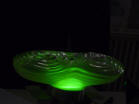
Isobiot®ope (thebuildingwichneverdies)
Meeting someone means facing the unknown, the strange, or even confronting your own repulsion at negotiating unfamiliar surroundings. It’s neither comfortable nor pleasing. It means crossing a heterotopic space where the passage itself is the only way to define yourself in relation to what’s already there.
This involves consideration of risk and a determination of whether or not to go through with it.
Meeting doesn’t mean plunging into a masked carnival, or huddling in a dark room, as if in a ceremony meant exclusively for a sum of individualities. It means daring to risk the unknown together.
“I remember the inaccessible zone and the room where wishes are granted in the Tarkovsky’s movie Stalker; a place you enter after crossing a territory where the gods clashed with humanity – we still don’t know who won that battle. The truce is unstable. Nothing can be discerned but sweat and silence, like climbers roped together, seeking to transgress the forbidden. The fence simultaneously protects those who are still there, about whom we know nothing, and those who dare venture in without knowing how to make use of what they may find there. At the end of the journey, amid the humid dilapidation, looms this Room of Wishes, where architecture is precisely the meeting point…”
R&Sie(n)’s apparatus is something similar, touching something which could simultaneously intrigue, attract and repulse you. The meeting point is not pretending to be safety.
But it’s also a fragment of the design of “thebuildingwhichneverdies” commissioned by the Zumtobel Group for its Thorn subsidiary.
This building is a nocturnal observatory pivoting on itself. This research laboratory is intended to analyze human beings’ physiological and ocular adaptation to the dark, in order to be able to reduce urban light pollution. This lab is aimed at the moon when it’s above the horizon, to take advantage of the one-lux minimum moonlight and even amplify it.
But at night this lab restores the light intensity of daytime by discharging UV sensor units located on all the exterior surfaces. Thus, their phosphorescent components (Isobiot®opic oxide pigment), populated on all its outdoor surfaces, report on solar activity, its degree of dangerousness according to its variations of intensity and specific nature (UV - A,B,C).
The components afterglow as a detector, an architectural Marker of the mutation of our environment and occur as a signal of UV human pathologies.
The level of UV which has crossed the Ozone layer is only revealed with a gap of time, after people are plugged into the shadows of the day, in the death of the sunset, by the after glowing ghost, inter canem et lupum…
Project visible at: http://www.new-territories.com/laboratoryoflight.htm
Web page: http://www.new-territories.com/biennale010.htm
--------------------------------------------------------------------
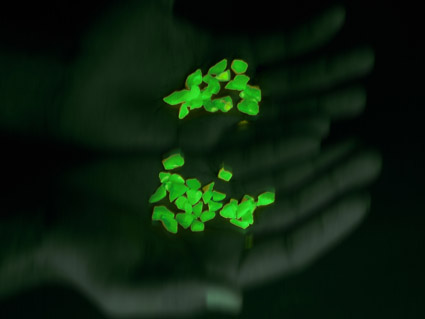
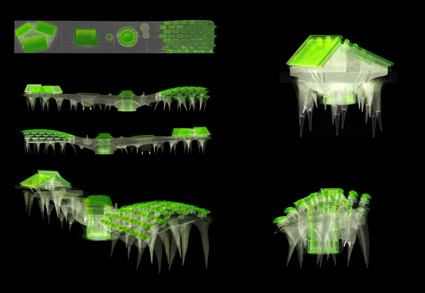
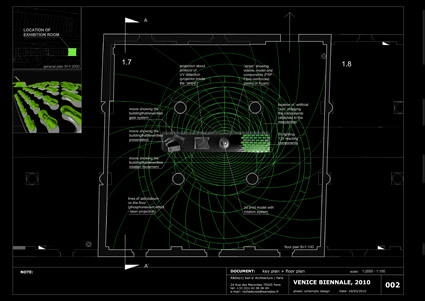
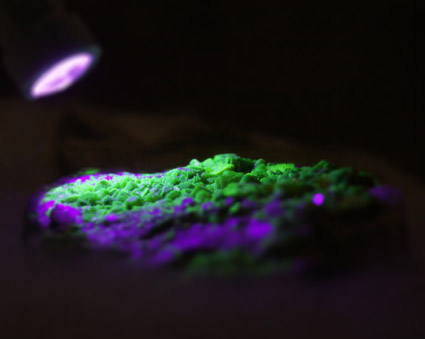
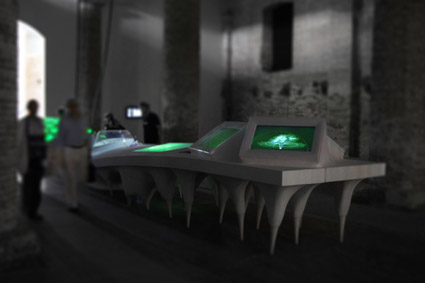
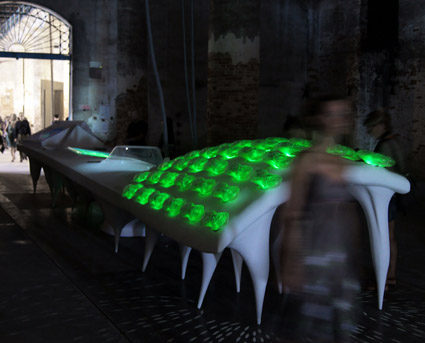
Components of after glowing as radiation sensor
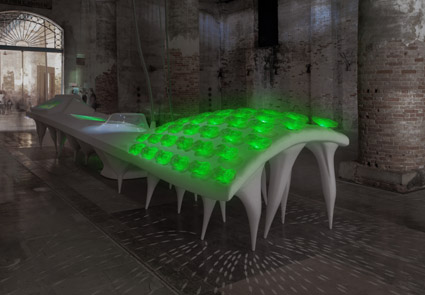
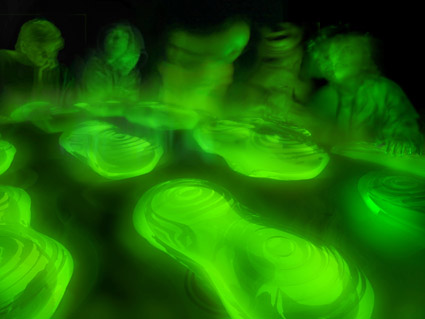


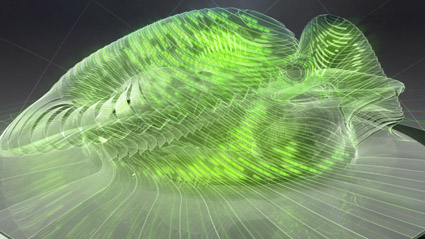
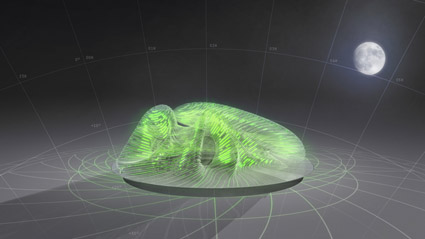
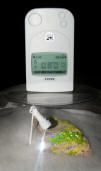
Geiger Counter
----------------------------------------------------------------------------------------------------------------------------------
theBuildingWhichNeverDies (tBWND)
Austria + France, Les Andelys 2009
Architect: R&Sie(n)…
Creative team: François Roche, Stéphanie Lavaux, Toshikatsu Kiuchi
With Sandra Meireis, Ulrike Marie Steen, Hamish Rhodes, Sina Momtaz
Light Engineer: Benoit Lalloz
Glass Graft men: Stephane Rivoal, Pedro Veloso
Key dimensions: 1000 m2
Client: Zumtobel
On the invitation of Herbert Resch and Astrid Kuehn
Cost: 7 m €
Text: Construction of a laboratory of light to test both “the dark adaptation”
to reduce urban light pollution and “the melatonin effect” with Oled lamp to
test the human metabolism circadian cycle.
Scenario:
1) Defining astronomical astrolabe shape by creating a correspondence between the location of the building and its celestial position
2) Dedicating the observatory to:
-The moon – the "aster of the night" –by tracking its position through the rotation of the observatory itself.
-The sun by collecting energy with phosphorescent pigments and photovoltaic cells.
3) Outdoor / Detection of the intensity of sun radiation by After glowing external surfaces, influenced by the seasonal and daily emission of the sun, through the surfaces "touched" directly by its rays. The phosphorescence components (“Isobiot®opic ” oxide pigment) are working as UV sensor and detector and indicate by night the intensity of UV which affected the zone by day, including people and all species. These glass components are by this way revealing and making visible the sun radiation dangerousness and the evolution of the Ozone concentration in the stratosphere.
4) Indoor / Testing and studying human physiology about aspects by the minimum perception of light and adaptation to darkness, and of how, conversely, bright light intensity affects our metabolism.
Project visible at: http://www.new-territories.com/laboratoryoflight.htm
